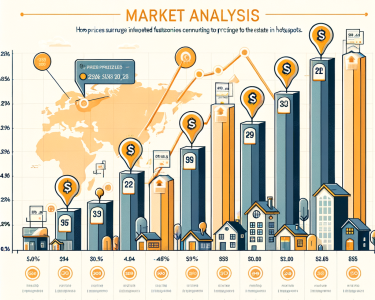Introduction
Manhattan, the vibrant heart of New York City, boasts a thriving retail scene that has become a beacon in the challenging landscape of real estate. In this article, we will explore the factors behind the remarkable revival of retail in Manhattan and the unique dynamics that set it apart.
The Resilience of Retail
Manhattan’s retail market has demonstrated remarkable resilience, defying global economic uncertainties. Several key factors contribute to this enduring success.
1. Consumer Confidence
- Diverse and Affluent Population: Manhattan is home to a diverse and affluent population. With a strong local economy and a high-income demographic, the demand for retail remains robust.
- Global Appeal: Manhattan’s global appeal ensures a consistent flow of customers, both residents and tourists. This diversity sustains the retail sector.
2. Tourist Magnet
- Tourism Hub: Manhattan is a global tourism hub, drawing millions of visitors annually. Iconic areas such as Times Square, Fifth Avenue, and Broadway are major attractions. This steady influx of tourists sustains retail businesses even during economic downturns.
- Shopping Destinations: Tourists view shopping in Manhattan as an integral part of their experience, making retail a significant contributor to the city’s economy.
The Shift to Experience
The retail market in Manhattan is undergoing a fundamental shift, focusing on providing immersive experiences rather than just products.
1. Experiential Retail
- Flagship Stores: Retailers are increasingly concentrating on creating flagship stores that offer unique and immersive shopping experiences. These stores become destinations in themselves, attracting both residents and tourists.
- Pop-Up Shops: Pop-up shops, offering temporary retail spaces with novel experiences and exclusive products, have gained popularity, creating consumer excitement.
- Interactive Displays: Technology is leveraged to create interactive displays that engage and entertain customers while they shop.
2. Dining and Entertainment
- A Holistic Experience: Shopping in Manhattan has evolved into a holistic experience, with retail spaces incorporating dining, entertainment, and cultural attractions.
- Dining Options: Restaurants, cafes, and food markets are integral components of the retail landscape, providing opportunities for shoppers to relax and savor diverse cuisines.
- Theater and Arts: Manhattan’s theaters and arts venues are often adjacent to retail spaces, offering a seamless transition from shopping to cultural experiences.
Reshaping Commercial Spaces
Adaptation and transformation are keys to Manhattan’s retail success, with commercial spaces undergoing creative reshaping.
1. Adaptive Reuse
- Revitalizing Old Spaces: Former office spaces and warehouses are creatively repurposed into modern retail destinations. These transformed spaces provide a unique shopping atmosphere.
- Heritage Buildings: Historic buildings are refurbished to preserve their architectural charm while accommodating contemporary retail needs.
2. Technology Integration
- Smart Stores: Technology is at the forefront. Smart stores with interactive displays, augmented reality features, and seamless payment options enhance the shopping experience.
- Mobile Apps: Retailers often have dedicated mobile apps that offer exclusive deals, personalized recommendations, and easy navigation through their stores.
- Contactless Payment: Contactless payment options have become the norm, reducing checkout times and enhancing safety.
Image by: https://cultbranding.com/
The Role of E-commerce
In a world increasingly dominated by e-commerce, Manhattan’s retail market harmonizes the digital and physical realms.
1. Showroom Concept
- Brick-and-Click: Retailers adopt a “brick-and-click” strategy, allowing customers to experience products in-store and place orders online. This seamless integration blurs the lines between physical and digital shopping.
- Customization: Showrooms enable customers to customize their orders, from clothing to electronics, to suit their preferences.
2. Last-Mile Delivery
- Strategic Location: Manhattan’s dense population and strategic location make it an ideal hub for last-mile delivery. E-commerce businesses use this advantage for quick and efficient deliveries.
- Reduced Transit Times: Shorter distances result in reduced transit times, ensuring customers receive their online orders promptly.
The Future Outlook
The future of Manhattan’s retail real estate market appears promising, with several trends and considerations shaping its trajectory.
1. Diverse Retail Mix
- Local Boutiques: Local boutiques offer unique and personalized shopping experiences, catering to niche markets and building strong customer relationships.
- Global Brands: Global brands continue to establish a presence in Manhattan, attracting international and local customers alike.
- Experiential Offerings: The retail landscape increasingly features experiential offerings, transforming stores into destinations rather than mere shopping spaces.
2. Sustainability and Resilience
- Economic Fluctuations: Retail businesses that can weather economic fluctuations and adapt to changing consumer preferences are expected to thrive.
- Sustainability: Sustainability will be a key consideration. Businesses that adopt eco-friendly practices will not only meet consumer demand but also contribute to a more sustainable future.
Comparative Table
Here’s a comparative table summarizing the key aspects of Manhattan’s retail real estate revival:
| Aspect | Driving Factors |
|---|---|
| Resilience of Retail | – Strong local economy and affluent population<br> – Continuous influx of tourists |
| Shift to Experience | – Flagship stores, pop-up shops, interactive displays<br> – Dining, entertainment, and cultural attractions |
| Reshaping Commercial Spaces | – Adaptive reuse of spaces<br> – Technology integration for a modern shopping experience |
| The Role of E-commerce | – Showroom concept for seamless online integration<br> – Strategic location for last-mile delivery |
| Future Outlook | – Diverse retail mix with local boutiques and global brands<br> – Focus on sustainability and resilience |
Conclusion
Manhattan’s retail market has experienced a remarkable revival, driven by consumer confidence, the allure of tourism, a shift towards experiential retail, creative reshaping of commercial spaces, and the harmonious coexistence of e-commerce and physical shopping. The future looks promising, with a diverse retail mix and a commitment to sustainability and resilience.
In the ever-evolving landscape of Manhattan, retail remains a vibrant and thriving segment, reaffirming its position as a beacon of success in the heart of the city that never sleeps. Manhattan’s retail market is indeed a bright spot in the realm of real estate.





